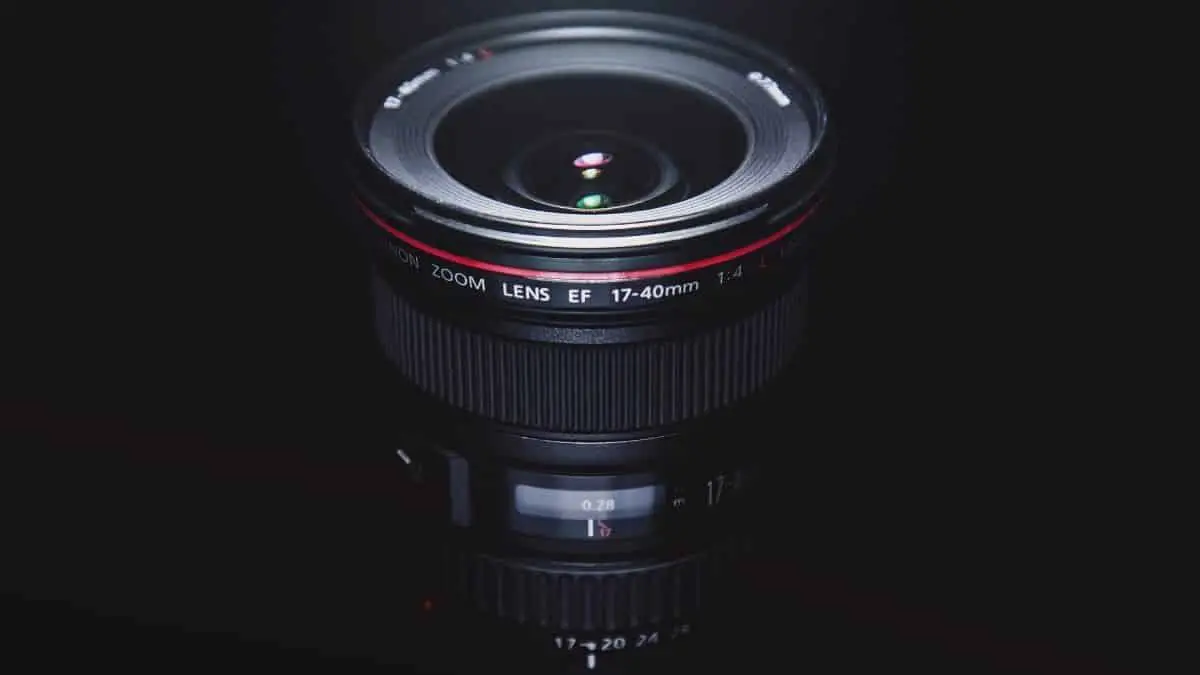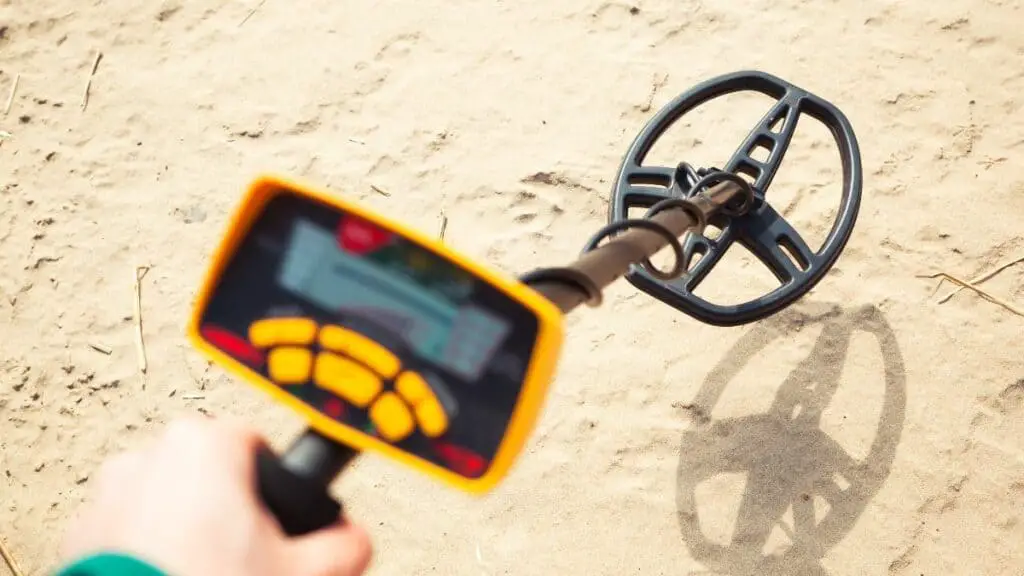Best Canon Lens for Astrophotography | Top 8 Picks for 2024
Getting good pictures of the night sky is not an easy task. Even once you’ve found the right camera and mastered using a tripod and star charts, you might not be getting the quality of pictures you want. This means it’s time to look at the lens you’re using. There is a lot to choose from, and you can really spend as much as your willing to, so it can be difficult to know where to start. Our top pick is the Rokinon Weather Sealed Auto Focus Wide Angle Lens. It’s a versatile lens that is reasonably priced and offers a wide range of uses, even beyond astrophotography.
| IMAGE | PRODUCT | DETAILS |
|---|---|---|

|
Best overall Rokinon Weather Sealed Wide Angle Lens
|
|

|
Best Quality Optics Canon EF USM Zoom Lens
|
|

|
Budget Option Canon EF-S IS II SLR Lens
|
Related post: Best DSLR Camera for Astrophotography [Top 10 in 2024]
Best Astrophotography Lens for Canons in 2024
1. Best Overall — Rokinon AF 14mm F2.8 Weather-Sealed Auto Focus Wide Angle Lens

Rokinon Weather Sealed Wide Angle Lens
This ultra wide-angle lens offer f/ratios from f/2.8 to f/22.
The Rokinon Weather-Sealed Wide Angle Lens is purpose made for astrophotography and landscape photography. It has a fixed 14mm focal length and a variable aperture size. This allows you to tailor the lens to your needs.
By changing the aperture size, you can change the speed of the lens. At the largest aperture size, you have a speedy f/2.2. This is more than enough to use on a static tripod. You can also narrow the aperture size down until you get f/22. You’re unlikely to use it in this configuration for night photography but, it does make it a far more versatile lens.
The ability to change the aperture size lets you try out a wide range of astrophotography techniques.
The lens components are made from high-quality glass. They are all treated with a UMC multi-coating finish. This reduces any light flares and ghosting giving you reliably great images.
2. Best Lens with Top Quality Optics — Canon EF 16-35mm f/2.8L ll USM Zoom Lens

Canon EF USM Zoom Lens
This lens is designed for use with full frame Canon cameras like a T6i, 6D, or a Rebel XSi.
The Canon EF USM Zoom Lens is part of Canon’s L range — their top range of camera lenses. If you have a full frame DSLR, like a T6i, 6D, or a Rebel XSi, then this may be the best zoom lens for astrophotography that you’ll find.
The build quality is top-notch, and it has the improved weather resistance that you find on the latest batch of Canon lenses.
You can find other EF lenses that have a wider angle, but this one is one of the fastest options, which makes it a great choice. With f/2.8, it’s fast enough to use with a static mount.
The optics in this lens are top-notch. This lens has two optical elements, which are made of UD glass. All of the lenses are coated with high-quality finishes that reduce ghosting and flare.
3. Budget Option — Canon EF-S 18-55mm f/3.5-5.6 IS II SLR Lens

Canon EF-S IS II SLR Lens
This lens will only work with APS-C cameras and offers a range of f/ratios from f/3.5 to f/5.6.
The Canon EF-S IS II SLR Lens is on the cheaper side for two reasons. Firstly it’s an EF-S lens. That means it will only work with compatible cameras. However, if you have an APS-C DSLR, like a 7D Mk II, T4i or 70D, then it will work perfectly.
The second reason this is a budget option is that it has a slightly slower speed than ideal. It’s probably not quite fast enough to use with a static mount. You are likely to need an exposure time that will be long enough to leave you with a small amount of star trailing. However, if you have a go-to mount, then this really isn’t a problem.
Despite being a budget pick, it is still an II Canon lens. That means it has improved weather resistance, which is definitely a great feature in any lens you plan to use for astrophotography.
With the aperture range of 18 – 55mm, you have a lot of options for using this lens. It will work well for applications beyond astrophotography. So if you’re looking for a low-cost, versatile lens, then this is a really good option.
4. Best Telephoto Lens — Canon EF 200mm f/2.8L II USM Telephoto Fixed Lens for Canon SLR Cameras

Canon Telephoto Fixed Lens
With a focal length of 200mm and a f/ratio of 2.8, this is a high-quality telephoto lens ideal for astrophotography.
The Canon Telephoto Fixed Lens has only eight elements. This means that you will get a much better light transmission level than other lenses on this list. Especially as it has two UD lenses in the mix, this is a great lens that has a lot to offer.
Unlike many of the other lenses for astrophotography on this list, this is not a zoomable lens. However, because it is a fixed telephoto lens, it offers a really high-quality experience.
This is an EF lens, so it’s only compatible with full frame canon cameras.
Despite being a telephoto lens, it is surprisingly compact. It fits in your hand and only weighs 1.2 pounds, so you’re not going to struggle to keep this lens pointed where you want it.
As it’s both a II and an L Canon lens, that means that it is ideal for astrophotography due to its combination of weather resistance and high-quality optics.
5. Best Refurbished Option — Canon EF 135mm f/2L USM Lens (Renewed)

Canon USM Lens (Renewed)
This second-hand lens is a great way to get an f/2 lens at an affordable price.
The Canon USM Lens (Renewed) is a great option for astrophotography. This is a really fast lens, so it is ideal for imaging the glory of the milky way. If you’re looking for a high-quality EF lens, then this refurbished option is a great choice.
While this is a second-hand lens, it won’t seem like it when you get it. The lenses have all been restored and work like new. It’s a great way to get your hands on a lens that otherwise would cost in excess of $1,000.
With its f/2 value, you will easily be able to take static pictures of the night sky. The micro motor inside it makes it a breeze to adjust the focus to get the perfect picture. This lens is an older model, which means it also works with some older manual focus Canon cameras as well.
As part of the L range from Canon, this lens has two UD lenses in it. You are unlikely to find a comparable lens for anywhere near this price.
6. Best Prime Lens — Samyang SYXP14-C XP 14mm f/2.4 High-Speed Wide Angle Lens

Samyang SYXP14-C XP Wide Angle Lens
This lens has a fixed focal length of 14mm and uses its ultra wide aperture to offer f/ratios from f/2.4 to f/22.
The Samyang SYXP14-C Wide Angle Lens is an excellent example of a prime lens. These are a good alternative to zoom lenses. They offer the same variation in speed without having complex mechanisms that can break over time.
This lens is ideal for all types of astrophotography. With it, in its largest aperture configuration, you get speeds of f/2.4. That is more than enough for static astrophotography. You can then narrow down the aperture to focus your images. This slows the camera down but gives you different slices of the night sky. It’s a really great option if you want to experiment with your style.
Not only is this a fast lens, but it’s also a super wide-angle lens. You get a 114.12o field of view. So it’s perfect for milky way photography.
This lens is an EF style lens. That means it’s compatible with all types of Canon DSLR cameras. So, whether you have a 5D Mk IV, an 80D, or a 1300D, this lens is a good option to try out.
7. Best for APS-C Cameras — Samyang 10mm F2.8 ED AS NCS CS Ultra Wide Angle Lens

Samyang Ultra Wide Angle Lens
This manual focus wide-angle prime lens has a maximum speed of f/2.8.
The Samyang Ultra Wide Angle Lens is a great alternative for anyone looking for a budget lens for their APS-C camera. The lower cost is due to the combination of this being an EF-S lens and that it only offers manual focus.
For astrophotography, the option to use autofocus isn’t really that helpful, so the loss of it with this lens is not a problem. The manual focusing is precise and feels reliable and smooth.
The max angle of view is a pleasing 106 degrees. The speed tops out at f/2.8.
This is a prime lens, which contributes to its feeling of being a reliable option. It’s solid in your hand but not overly weighty.
The only real drawback with this lens is the lack of weatherproofing. If you are the type of astrophotographer who will shoot no matter the weather, then you will probably want to keep looking. If, however, you’re on a budget and aren’t a fan of the rain, then this is a great choice to have.
8. Best Ultra Fast Lens — Sigma Art DG HSM Lens for Canon EOS Cameras

Sigma Art DG HSM Lens
This is the first f/1.8 prime lens on the market; you won’t find any faster.
The Sigma Art DG HSM Lens is an impressively crafted piece of kit. It’s EF compatible, so it will work with most Canon DSLR cameras. With its maximum speed of f/1.8, this is the fastest prime lens around.
Not only is this a fast lens, but it offers superb optics as well. The images you’ll get will be sharp and crystal clear, and the colors stay impressively true right to the edges. What you will notice is how different images look in the absence of spherical and chromatic aberrations.
The performance at f/1.8 is impressive. However, if you go down by one f/stop, you still see an improvement. This is true for all lenses. What makes this special is that f/2.8 is the slower speed that gives you higher performance.
The big downside to this option is the weight. Because it is loaded up with clever features and engineering, it does veer towards the heavier end of the spectrum. However, if you are using a motorized mount with the capacity for a little extra weight, this is a great option to consider.
What to Consider When Buying Canon Lens for Astrophotography
Lens Speed
Lens speed is the ratio between the focal length of your lens and its aperture size. A smaller f/ratio represents a faster lens. This means that you will be able to get a better picture with a shorter exposure time.
If you are going to be taking fixed tripod shots, you want to find a lens with at least f/2.8. This will allow you to get high-quality images without having to worry about tracking objects in the sky. This essentially means that you want to look for lenses with the largest aperture size you can find.
If you are using a go-to equatorial mount, then lens speed is no longer a large concern. With this sort of mount, you can set your camera up and take as long of an exposure as you want. No matter how long you leave it, you won’t end up with star trails.
Aperture Size
Very closely related to the lens speed is the aperture size. When it comes to the best lens for astrophotography, you’ll want to look for an ultra-wide lens. This will give you the fast lens you need. It will also capture more light giving you brighter and better-defined star images.
If you’re struggling to get your head around all the numbers, you can just remember that looking for a wide aperture lens will get you both more light and a shorter exposure time. So, looking for a wide aperture lens is a good shortcut to finding a good lens for astrophotography.
Camera Sensor Size
If you are using a DSLR of astrophotography, you will likely either have a full-frame sensor or an ASP-C. If you have a Canon camera, it will be a DX if you have an ASP-C sensor. Which one you have matters. You need to pick a lens that will work with your sensor size.
Manufacturers have begun making cheaper lenses by making them smaller and more suited to the ASP-C sensor size. However, if you use these lenses with a full-frame sensor, you’ll end up with quite a few problems, including poor image quality.
Optical Quality
The quality of the glass used to make the lenses will impact the quality of the images you get. The longer the exposure of your picture, the more this will matter. If you are looking for the best optics, you’ll want to keep an eye out for lenses made of UD glass.
UD glass is an extra low dispersion glass. Lenses made from this glass are much more effective at keeping light focus into neat points. This gives you much better definition in your final image.
Brand
If you have a Canon camera, you will automatically find yourself looking at Canon lenses as well. While Canon does make excellent lenses, they are not your only option. If you’re looking for a budget option, you’ll often do better by looking at third-party manufacturers. Many make great lenses. They just cost less because they don’t have the brand name recognition.
Number of Optical Components
One of the reasons that a telescope can give you such a high-quality image is that the light isn’t messed around with too much. It will pass through the minimum number of lenses possible. Usually no more than four lenses. This minimizes light loss and keeps the view looking great.
With a camera lens, you need to use more lenses. Otherwise, you’d have something the size of a telescope on the end of your camera. However, the more elements that the light has to pass through, the less light will ultimately make it to your camera. So, if you have the choice, it’s always better to choose a camera lens that has fewer optical elements in it.
Frequently Asked Questions
Which lens is best for night sky astrophotography?
The best lens will depend in part on your set up. If you are using a static tripod, then the best lens for astrophotography will be on with a small f/ratio. That way, it can take high-quality pictures with a shorter exposure. A good option is the Sigma 14mm f/1.8 DG HSM.
If you have a go-to equatorial mount, then you’ll most likely be interested in a lens that has the highest quality optics, regardless of the f/ratio. In this case, a good option is the Canon EF 16-35mm f/2.8L ll USM Zoom Lens.
Is a 50mm lens good for astrophotography?
We’ve talked a lot about wide-angle lenses, but they aren’t the only option. You can get great night sky images with a 50mm lens as well. You just have to be aware that it will give you very different pictures.
You will most likely have a maximum exposure time of around 10seconds. Any longer, and you’ll begin to get star trailing. You will also see a much smaller section of the night sky than you get from a wide field lens. This combines to give you a lens that is ideal for taking pictures of smaller constellations. For instance, you can capture Orion beautifully with a 50mm lens.
What are the different types of Canon lenses?
Canon lenses come in three designations. The EF lenses will work with both full frame and APS-C DSLR cameras. The EF-S lenses will only work with APS-C DSLR cameras. The EF-M will only work with Canon EOS M mirrorless cameras.
Some of the newer lenses will have II in their name. If you see this, it just means that they have improved weather resistance — a plus in a lens for astrophotography. Another option you might see are L lenses. These are the Canon lenses with thick red lines around the barrel. These are the best quality lenses that Canon makes.
Most third party manufacturers will use the same Canon terminology for their Canon compatible lenses.
How do I know which type of lens will fit my camera body?
It’s really easy to determine which sort of lens you need. You first remove the lens from your camera. Then look at the lens mount. If there is a red square, it will accept Canon EF lenses. If there is a white circle, it will accept Canon EF-S lenses. If both are present, you can use either.
Last update on 2024-04-20 / Affiliate links / Images from Amazon Product Advertising API











